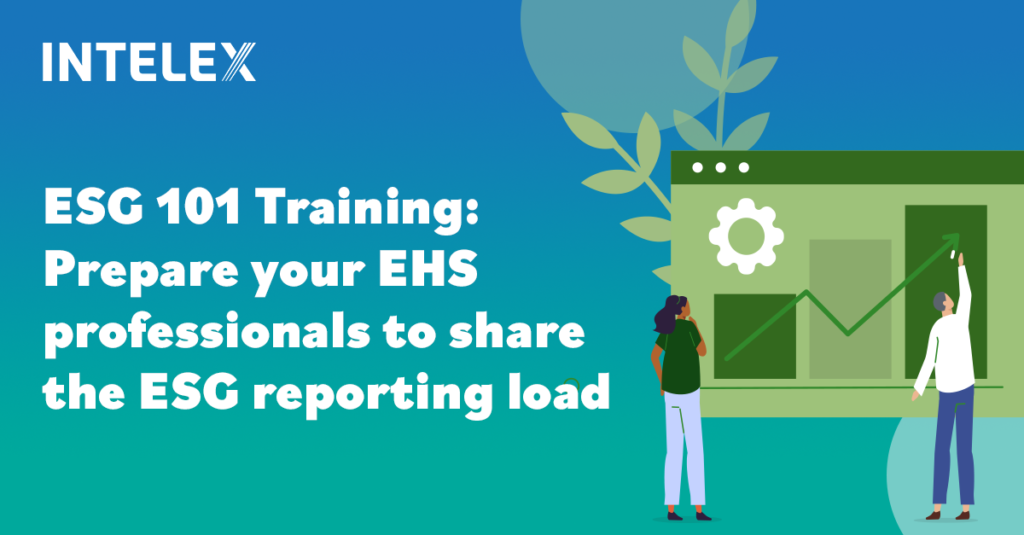ESG Reporting is a Critical Skillset for your EHS Teams
October 4, 2022

Commitment to ESG issues is high across organizations. It is driven by various internal drivers such as the desire to create a positive impact for the planet and society, avoid negative publicity, attract customers and better talent, etc. ESG reporting acts as a tool to provide evidence of a company’s activities and performance on the issues it has committed to work on.
ESG reporting has become more sophisticated and formal than it was a few years ago. The reporting landscape is evolving rapidly. While it once consisted primarily of voluntary and intent-driven disclosures, there has been a recent influx of mandatory disclosure requirements to increase transparency of ESG data for better decision making.
ESG Reporting: From Early Days to Today
Looking back at the early days of sustainability reporting, it was mainly free-for-all information, primarily disclosed at will and published in corporate social responsibility reports. The landscape is now changing. Interest in ESG reporting has risen significantly, especially as investors and asset managers consider ESG risks in their investment decisions.
The ESG investing trend can be seen from the data published by Bloomberg Intelligence, where it was noted that ESG assets were at $30.6 trillion in 2018, surpassed $35 trillion in 2020 and are projected to exceed $41 trillion by 2022.
As ESG management picked up heat over the last few years, companies started using frameworks and standards provided by non-profit organizations such as Global Reporting Initiative (GRI), CDP (formerly Carbon Disclosure Project), and others. Currently, there are many such frameworks and standards that exist. While these frameworks provide structure and depth to the reported data, companies find it difficult to decide which framework to choose. Further, companies within the same industry choose different voluntary frameworks and report at various times of the year. This leads to inconsistent, incomparable and patchy data, creating hurdles for the capital market players in making informed investment decisions.
According to EY, “Working with ESG data is no longer optional. Asset managers, banks and insurers are all moving toward a more disciplined and rigorous approach to evaluating companies’ nonfinancial performance. However, progress is hindered by the inadequate disclosure of ESG risks by issuers, and further slowed down by conflicting ESG taxonomies and contradictory ESG ratings.”
If this tells us anything, it is that ESG reporting has become a serious business!
Regulators and standards bodies heard investors’ voices and are putting more emphasis on mandatory disclosures and framework standardization. Regarding climate, according to Datamaran, the number of climate-related regulations increased by 245% between 2015 and Q1 2022, with the European Union among the leaders in bringing such regulations.
As ESG reporting is getting more sophisticated, it’s interesting to point out some of the asks from the users of ESG data, especially the capital market users: consistent and comparable data, investor grade quality, integration with financial reporting, auditable data and many other elements are becoming increasingly important.
EHS Compliance Provides a Strong Base for ESG Reporting
Companies with a strong handle on EHS compliance have an advantage over the competition because there is heavy cross-over between EHS and ESG. EHS teams already possess a lot of data on environment (air emissions, waste management, water consumption, etc.) and social factors (workers’ health and safety, employee relations, etc.). They are used to rigorous compliance/reporting procedures and processes and are also in control of optimizing processes that can help improve ESG performance.
EHS compliance provides a head start on ESG, and EHS teams are in a prime position to pave the way for their organizations towards achieving ESG goals. As EHS professionals are expected to be the major contributors in this journey, it’s imperative that there are increased expectations from them. EHS job descriptions are being updated, roles are expanding and the mandates are changing. As a result, some EHS practitioners are struggling to adapt to ESG requirements and to acquire the right ESG knowledge. However, the clock is ticking to get moving with ESG reporting!
With our 30 years of experience in serving EHS professionals, Intelex understands that knowledge can create a strong foundation for them to succeed in their journey from EHS management to ESG management. That’s why Intelex has introduced the ESG Reporting online training course, the second module in our three-part learning series on ESG. It provides an overview of ESG reporting and its importance, a comparison of key reporting frameworks, a discussion about key stakeholders within the ESG information ecosystem and a summary of recent ESG developments. It is relevant for EHS professionals who are building a foundation in ESG reporting and for the sustainability professionals who are at the outset of their ESG journey.
If you’d like to learn about the basics of ESG, access our free online training course on ESG Fundamentals.





